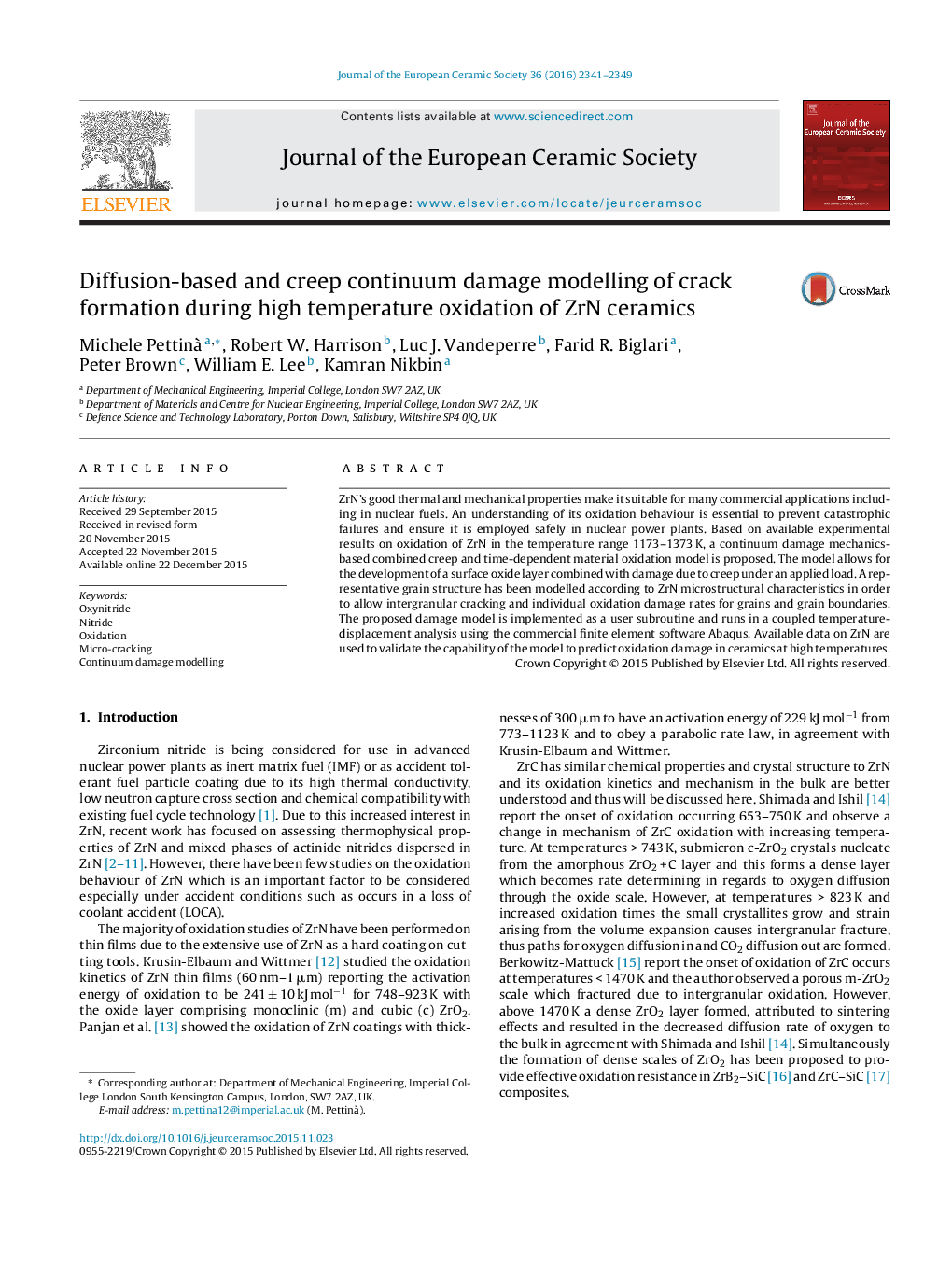| Article ID | Journal | Published Year | Pages | File Type |
|---|---|---|---|---|
| 1473739 | Journal of the European Ceramic Society | 2016 | 9 Pages |
ZrN’s good thermal and mechanical properties make it suitable for many commercial applications including in nuclear fuels. An understanding of its oxidation behaviour is essential to prevent catastrophic failures and ensure it is employed safely in nuclear power plants. Based on available experimental results on oxidation of ZrN in the temperature range 1173–1373 K, a continuum damage mechanics-based combined creep and time-dependent material oxidation model is proposed. The model allows for the development of a surface oxide layer combined with damage due to creep under an applied load. A representative grain structure has been modelled according to ZrN microstructural characteristics in order to allow intergranular cracking and individual oxidation damage rates for grains and grain boundaries. The proposed damage model is implemented as a user subroutine and runs in a coupled temperature-displacement analysis using the commercial finite element software Abaqus. Available data on ZrN are used to validate the capability of the model to predict oxidation damage in ceramics at high temperatures.
